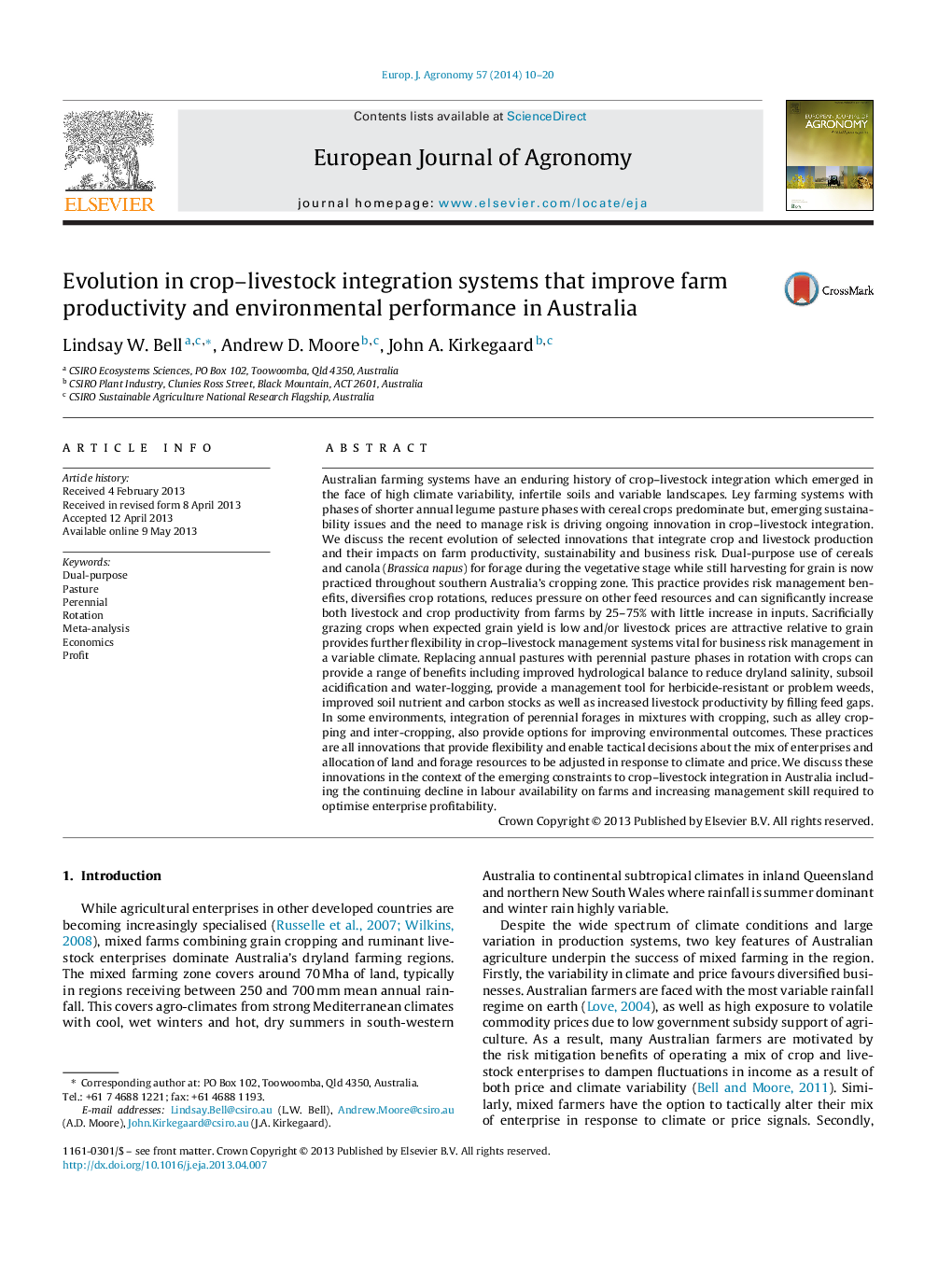| کد مقاله | کد نشریه | سال انتشار | مقاله انگلیسی | نسخه تمام متن |
|---|---|---|---|---|
| 4508939 | 1624468 | 2014 | 11 صفحه PDF | دانلود رایگان |
• Mixing crops and livestock helps Australian farmers manage climate, price and soil variability.
• Recent crop–livestock innovations can improve farm productivity, sustainability and reduce risk.
• Potential for grazing dual-purpose cereal and canola crops or sacrificially grazing crops is unrealised.
• Perennial pasture phases in grain crop rotations can provide multiple farm benefits.
• Systems growing mixtures of crops and pastures and to utilise novel pasture species are evolving.
Australian farming systems have an enduring history of crop–livestock integration which emerged in the face of high climate variability, infertile soils and variable landscapes. Ley farming systems with phases of shorter annual legume pasture phases with cereal crops predominate but, emerging sustainability issues and the need to manage risk is driving ongoing innovation in crop–livestock integration. We discuss the recent evolution of selected innovations that integrate crop and livestock production and their impacts on farm productivity, sustainability and business risk. Dual-purpose use of cereals and canola (Brassica napus) for forage during the vegetative stage while still harvesting for grain is now practiced throughout southern Australia's cropping zone. This practice provides risk management benefits, diversifies crop rotations, reduces pressure on other feed resources and can significantly increase both livestock and crop productivity from farms by 25–75% with little increase in inputs. Sacrificially grazing crops when expected grain yield is low and/or livestock prices are attractive relative to grain provides further flexibility in crop–livestock management systems vital for business risk management in a variable climate. Replacing annual pastures with perennial pasture phases in rotation with crops can provide a range of benefits including improved hydrological balance to reduce dryland salinity, subsoil acidification and water-logging, provide a management tool for herbicide-resistant or problem weeds, improved soil nutrient and carbon stocks as well as increased livestock productivity by filling feed gaps. In some environments, integration of perennial forages in mixtures with cropping, such as alley cropping and inter-cropping, also provide options for improving environmental outcomes. These practices are all innovations that provide flexibility and enable tactical decisions about the mix of enterprises and allocation of land and forage resources to be adjusted in response to climate and price. We discuss these innovations in the context of the emerging constraints to crop–livestock integration in Australia including the continuing decline in labour availability on farms and increasing management skill required to optimise enterprise profitability.
Journal: European Journal of Agronomy - Volume 57, July 2014, Pages 10–20
